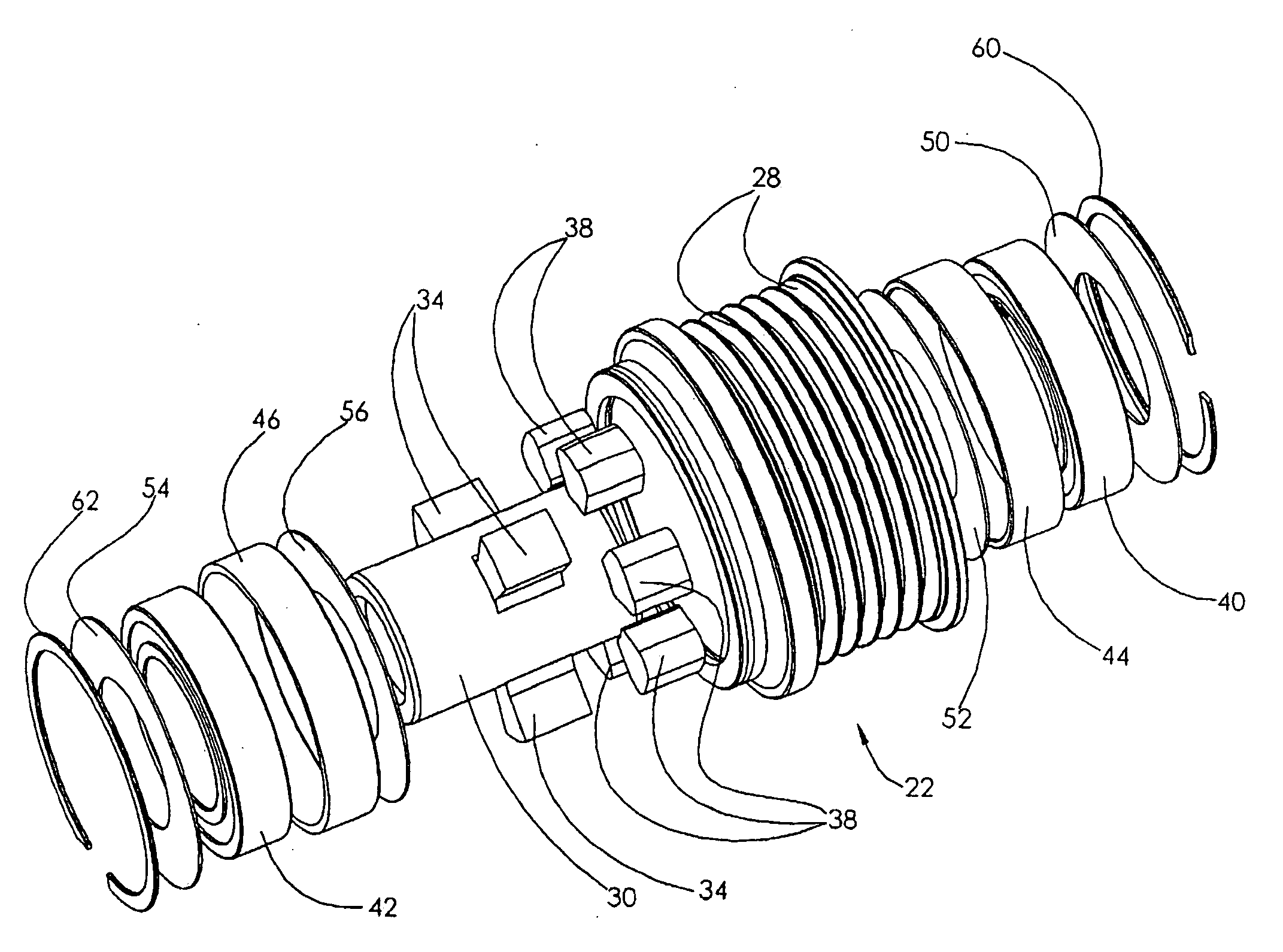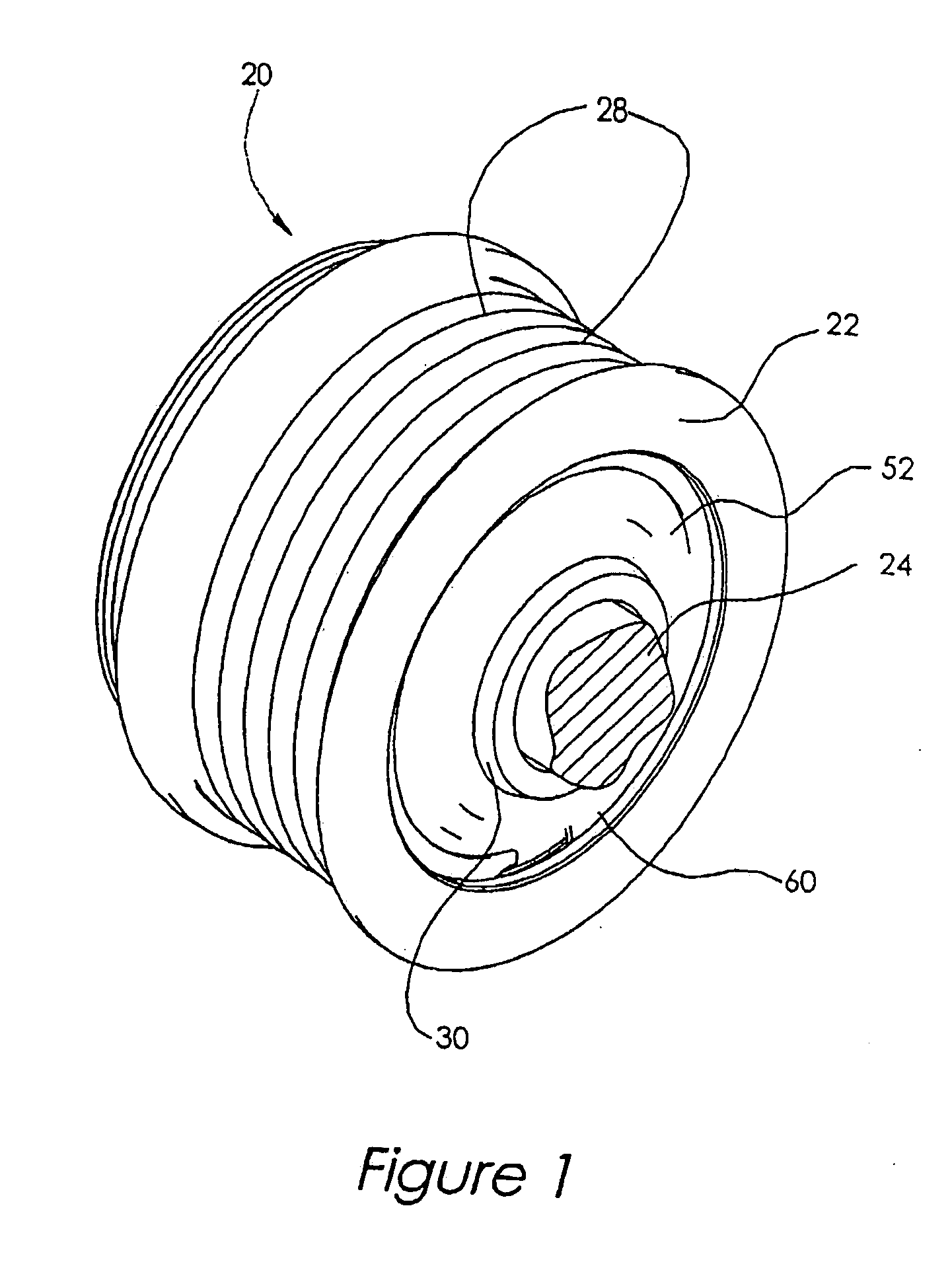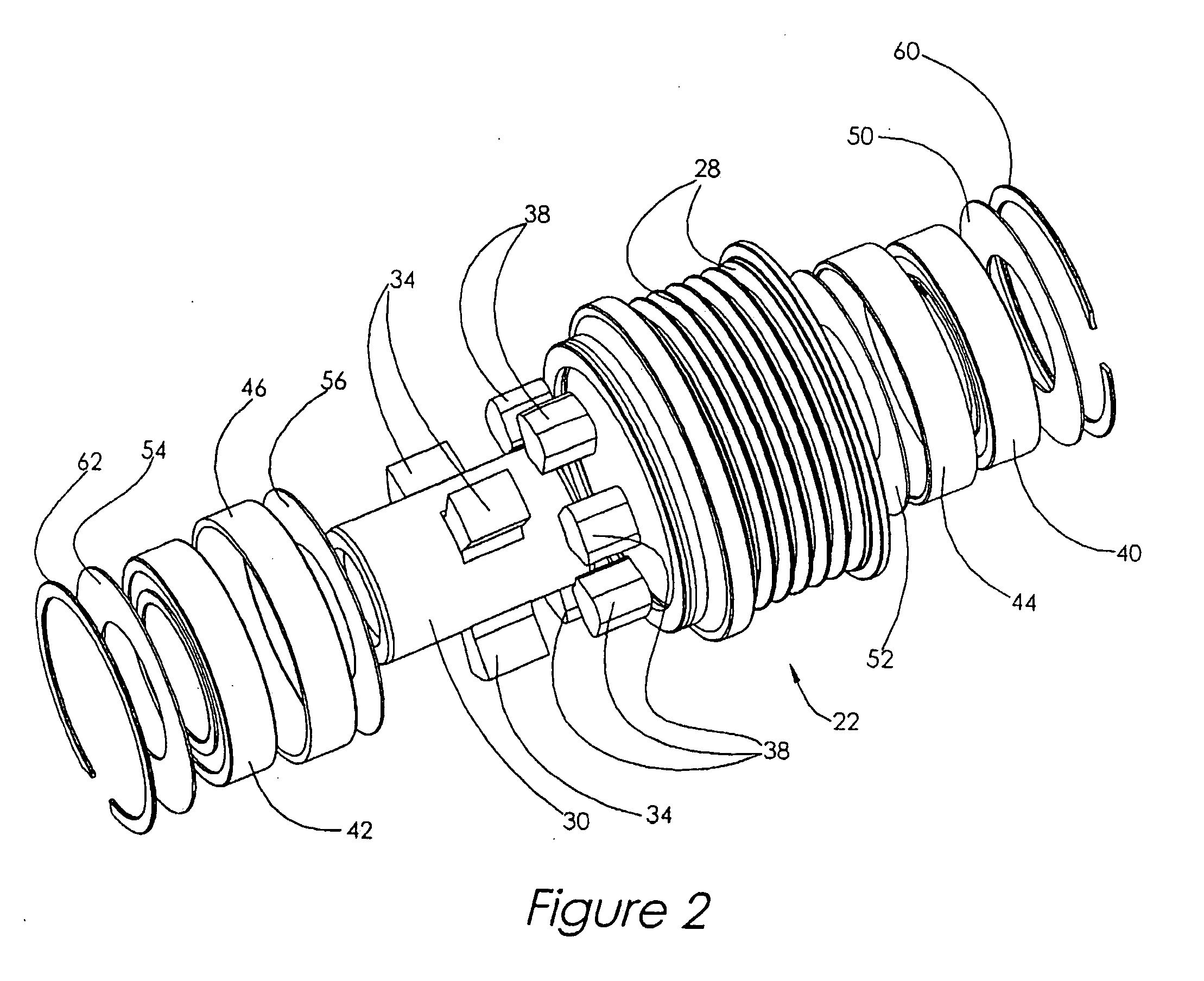Polymer spring controlled pulley assembly for rotary devices
a technology of rotary devices and pulleys, which is applied in the direction of yielding couplings, gearing elements, hoisting equipments, etc., can solve the problems of conventional belt tensioners, inability to compensate, and the rotation of the crankshaft of an internal combustion engine, so as to reduce the impact of velocity changes, and reduce the speed differential
- Summary
- Abstract
- Description
- Claims
- Application Information
AI Technical Summary
Benefits of technology
Problems solved by technology
Method used
Image
Examples
Embodiment Construction
[0023]The invention is particularly well adapted for use in automotive applications and will be described in that context. It will be appreciated, however, that this is illustrative of only one utility of the invention, and that the invention has broader applicability to other applications. As will be appreciated from the description which follows, the invention advantageously reduces noise and vibration in applications and systems which employ rotating prime movers or drivers, such as internal combustion engines or the like, that are characterized by pulsed rotational variations or velocity perturbations, and rotary devices driven by the prime movers.
[0024]FIG. 1 shows a perspective view of a pulley assembly 20 comprising a pulley 22 and a drive system in accordance with the invention. The pulley assembly is adapted to be located on the end of a drive shaft 24 of a rotating device, such as an automotive alternator (not illustrated), and to be driven in a well known manner by a driv...
PUM
 Login to View More
Login to View More Abstract
Description
Claims
Application Information
 Login to View More
Login to View More - R&D
- Intellectual Property
- Life Sciences
- Materials
- Tech Scout
- Unparalleled Data Quality
- Higher Quality Content
- 60% Fewer Hallucinations
Browse by: Latest US Patents, China's latest patents, Technical Efficacy Thesaurus, Application Domain, Technology Topic, Popular Technical Reports.
© 2025 PatSnap. All rights reserved.Legal|Privacy policy|Modern Slavery Act Transparency Statement|Sitemap|About US| Contact US: help@patsnap.com



